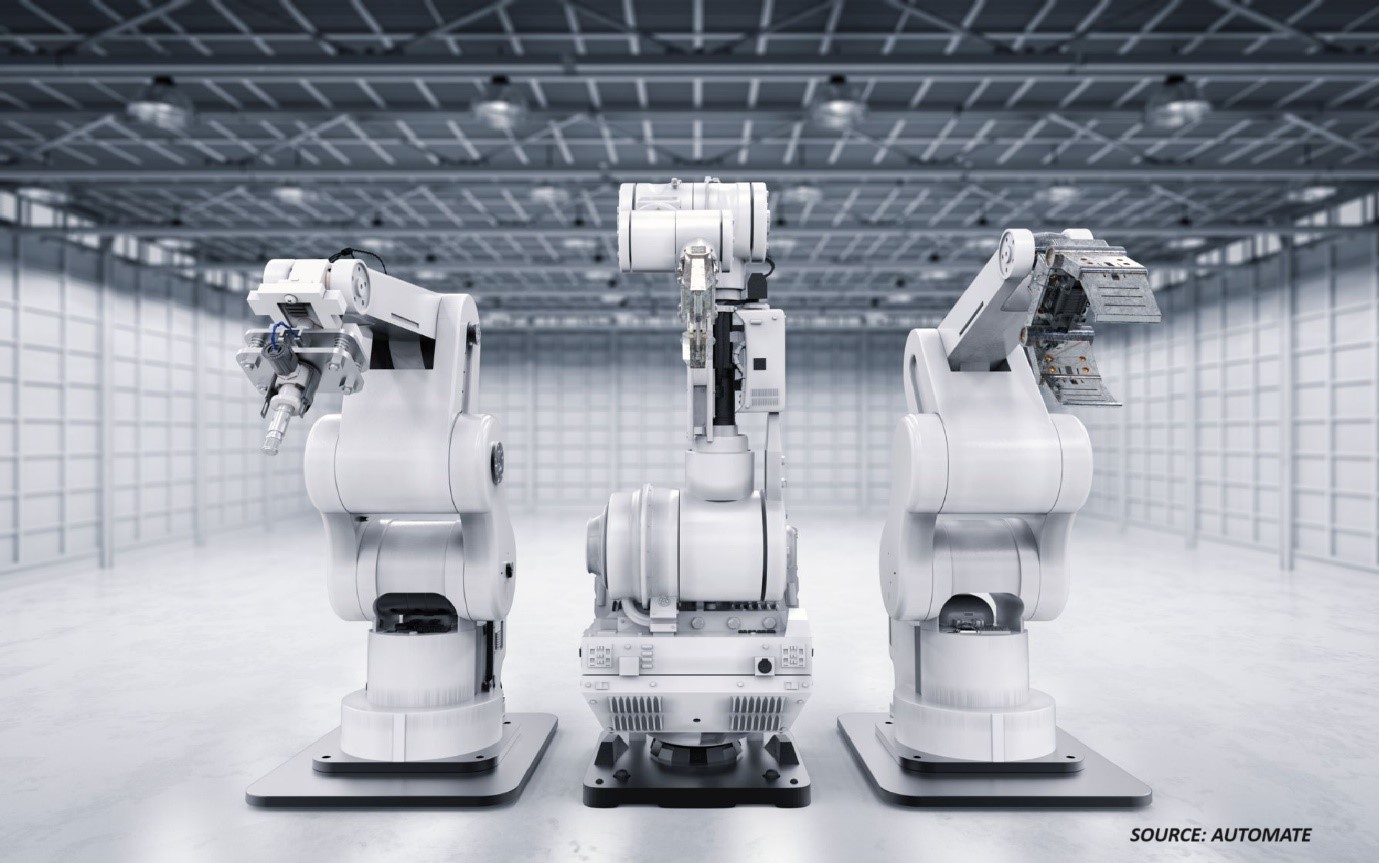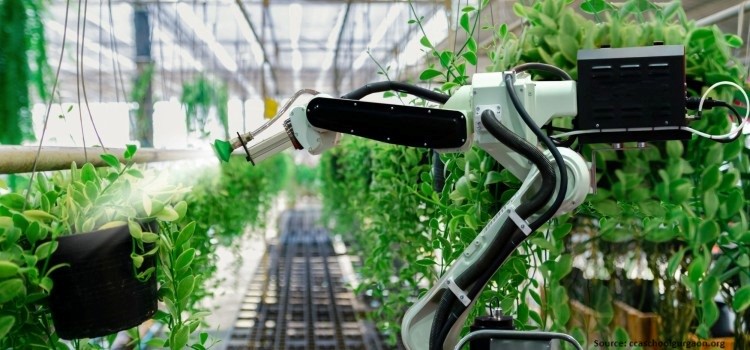
Hospital Logistics Robots Market by Type (Automated Guided Vehicle (AGV) and Mobile Robot) and Application (Pharmacy, Laboratory, Sterile Goods/Surgical Supplies Delivery, Food Delivery, Laundry Delivery, Waste Transportation, and Others) – Global Opportunity Analysis and Industry Forecast 2023–2030
Industry: ICT & Media | Publish Date: 09-Mar-2023 | No of Pages: 367 | No. of Tables: 283 | No. of Figures: 250 | Format: PDF | Report Code : N/A
Market Overview
Hospital Logistics Robots Market was valued at USD 1.20 billion in 2022, and is expected to reach USD 5.63 billion by 2030, with a CAGR of 20.9% from 2023 to 2030.
Hospital logistics robots are automated systems designed to assist with various tasks within a hospital setting. They are used to transport medical supplies, samples, medications, and other items such as meals to patients and staff, as well as to assist with cleaning and disinfection of patient rooms.
Hospital logistics robots can be programmed to navigate through hospitals, follow schedules, and interact with other systems such as inventory management, medical equipment, hospital management, and elevators to complete their tasks autonomously.
They can also be controlled remotely by hospital staff. The ultimate goal of hospital logistics robots is to improve efficiency, reduce costs, minimize human errors, and improve patient safety. Utilizing hospital logistics robots can provide numerous benefits, including reducing likelihood of errors made by humans, enhancing patient satisfaction, promoting higher levels of hygiene & infection control, expanding mobility & independence, and automating repetitive tasks such as delivering meals & medical supplies.
Increase in demand for automation in healthcare facilities
The aftermath of the COVID-19 pandemic has led to surge in need for automation in healthcare as it can assist in lowering transmission of infection and alleviate the burden on healthcare personnel. According to a report published on Statista, 90% of large healthcare organizations reported that they have an AI and automation strategy in 2020 globally, which is an increase from 53% in 2019.
Automation can enhance healthcare delivery by streamlining tasks such as transportation of medical supplies & samples and it minimizing human error. It can increase efficiency of logistics in hospitals, reduce workload on healthcare staff, and decrease labor costs as robots can work 24/7 without breaks or benefits.
This can lead to cost savings for hospitals and healthcare facilities. Automated hospital logistics robots can help reduce the risk of human error such as medication or blood & tissue sample mix-ups and minimize human intervention, particularly during the COVID-19 pandemic, which also helped to reduce the risk of infection transmission. Moreover, increase in adoption of telemedicine has led to increase in demand for robots that can assist with tasks such as sample collection and equipment delivery.
Growth in focus on patients and enhanced efficiency within the healthcare environment
Hospital logistics robots can improve patient experience by providing a personalized, convenient, and private service, while communicating in a friendly and engaging manner. Robots can be used to deliver meals, newspapers, books, and other items to rooms of patients that makes it more convenient for patients. They can be used to transport samples such as blood and urine samples to and from laboratories for testing. Robots can improve patient satisfaction by enhancing patient experience as healthcare providers are increasingly recognizing importance of patient satisfaction and have been seeking ways to improve it.
Use of hospital logistics robots can be an effective way to achieve this goal as they are designed to follow safety protocols and can be programmed to avoid obstacles and hazards, which can help improve patient and staff safety. Robots can help increase focus on safety by automating tasks that are dangerous or pose a high risk for human error. For instance, robots can be used to handle hazardous materials such as infectious waste, reducing the risk of exposure for healthcare workers. Furthermore, hospital logistics robots have advanced sensors and navigation modes such as Lidar sensors, infrared sensors, ultrasonic sensors, and SLAM (Simultaneous Localization and Mapping) in hospitals.
Problem of data security and privacy concerns hamper the market
Data security and privacy concerns can be a problem with hospital logistics robots as these robots typically handle sensitive patient information such as medical records, test results, and treatment plans. Appropriate security measures must be in place to prevent unauthorized access, data breaches, and hacking or malware attacks on hospital logistics robots and their systems. This could lead to unauthorized access to patient information and disruption of robot function, as well as proper encryption and security for data sharing to prevent interception or unauthorized access.
Proper configuration and maintenance of hospital logistics robots is crucial to prevent data leakage such as retention of patient information after delivery and exposure to unauthorized individuals. Hence, to mitigate these concerns, hospitals should implement robust security measures such as encryption, firewalls, and regular security updates. They should also have a plan in place to detect and respond to security incidents and should train their staff on how to handle sensitive patient information securely.
Advancements in sensors and perception technology
Advancements in sensor and perception technology can greatly improve capabilities of hospital logistics robots. These robots are equipped with cameras and object recognition software could be used to locate and retrieve a specific medical instrument or medication from a storage room. In addition, advancements in perception technology such as Natural Language Processing (NLP) and Machine Learning (ML) can enable robots to understand and respond to verbal commands or requests from hospital staff. This can greatly improve the efficiency and accuracy of tasks such as delivering medication or transporting patients.
North America is projected to dominate the hospital logistics robot’s market
Factors such as an increasingly aging population, rise in healthcare costs, and growth in need for improved efficiency in hospital operations propel the market growth in North America. A significant factor that contributes toward growth of the market includes increase in adoption of autonomous mobile robots (AMRs) for tasks such as transportation of medical equipment & supplies and patient transport.
Moreover, these robots are frequently used in hospitals around the region to disinfect medical equipment and surfaces, lowering the risk of infection. For instance, in July 2022, autonomous UVD UVc light disinfection robots by Regency Robotics were approved by Health Canada after a year-long process to combat Hospital Acquired Infections (HAIs) and help save lives. Toronto hospitals that have tested these disinfecting robots have found that they enhance disinfection certainty and speed up process of cleaning and restocking supplies in rooms by scaling back on disinfection time.
In addition, various prominent players including ABB Ltd. and Teradyne Inc., are adopting various market strategies such as expansions and product launches to expand their market presence in the country.
For instance, in December 2022, ABB expanded its operation in Shanghai, China by opening a new 67,000-square-meter robotics factory to maximize productivity. These production cells are digitally connected and networked. Robotic systems perform tasks such as fastening screws, assembling, and material handling inside cells. The facility primarily focuses research on autonomous mobility, digital twins, machine vision, and low-code programming software.
Europe witnessed substantial growth in hospital logistics robots industry
In Europe, healthcare is generally considered to be of high quality. Many European countries have universal healthcare systems that provide comprehensive coverage to all citizens. The market for hospital logistics robots in Europe is being significantly driven by adoption of automation in healthcare through the use of telemedicine robots. These robots are equipped with cameras, microphones, and other communication tools, allowing medical professionals to remotely monitor patients and provide care.
For instance, in August 2020, at Zealand University Hospital in Denmark, five hospital departments got autonomous delivery every day from the hospital's sterilizing facility. The goal of flexible and automated logistics throughout the planned 190,000 square meters super hospital is being realized with the help of a mobile robot from Mobile Industrial Robots (MiR).
Furthermore, adoption of Industry 4.0 technologies, which enables real-time tracking, monitoring, and control of hospital logistics robots is expected to strengthen the market growth. For instance, in May 2022, Mobile Industrial Robots (MiR) and Nokia showcased the power of private 5G wireless for digital transformation of industries at LogiMat in Germany. The companies demonstrated how 5G can be employed to revolutionize tasks for workers in the manufacturing, healthcare, and warehouse industries.
In addition, presence of regional key players such as Exotec Solutions and Aldebaran Robotics that are expanding their businesses for providing autonomous robots for logistics and warehouse solutions propels growth of the market in France.
For instance, in January 2022, Exotec Solutions, a leader in global warehouse and logistics robotics received a funding of USD 335 million in Series D funding from Goldman Sachs Asset Management. Exotec intends to use these funds to launch large-scale deployments and to hire 500 new R&D engineers by 2025 to accelerate advancements of its high-performance warehouse automation technologies.
Competitive Landscape
The hospital logistics robots industry includes various market players such as ABB Ltd, DF Automation and Robotics SDN BHD, PAL Robotics SL, AETHON, Locus Robotics, Panasonic Holdings Corporation, Ramboll Group AS, Teradyne Inc., Omron Corporation, Midea Group Co. Ltd., Diligent Robotics, Altra Industrial Motion Corporation. These market players are adopting several strategies such as product launches, partnership, and innovation across various regions to maintain their dominance in the hospital logistics robots market.
For instance, in January 2023, Locus Robotics collaborated with DesignFuture Japan, a Japanese arm of Material Bank to deploy LocusBots at the Material Bank Japan for their beta launch in their distribution warehouse. Through this partnership, companies will introduce 25 Locus AMRs in Japan to the Material Bank Japan HUB (Ichikawa City, Chiba Prefecture) to realize an ESG-friendly and high-productivity logistics scheme.
Through this partnership, it will improve both the working environment and sustainability through automation and streamlining of picking operations, as well as enhance customer experience for Material Bank Japan users.
In addition, in September 2022, ABB introduced AMRs by rebranding and integrating them into ABB’s portfolio under ‘Flexley Tug and Flexley Mover.’ These AMRs cover applications including towing, trolley transportation up to 2,000 kg (4,409 lb.), as well as lifting and transporting racks, containers, and pallets of 1,500 kg (3,306 lb.).
Moreover, in May 2022, a new robotic software, RoMi-H was introduced by Changi General Hospital (CGH)'s Centre for Healthcare Assistive and Robotics Technologies, the Integrated Health Information Systems, and engineering firms Hope Technik and Open Source Robotics. Through this innovation, the company aims to provide a common "language" for robots to interact with hospital building infrastructure including lifts.
KEY MARKET SEGMENTS
By Type
-
Automated Guided Vehicle (AGV)
-
Mobile Robot
-
Autonomous Mobile Robot
-
Remote-controlled Mobile Robot
-
By Application
-
Pharmacy
-
Laboratory
-
Sterile Goods/Surgical Supplies Delivery
-
Food Delivery
-
Laundry Delivery
-
Waste Transportation
-
Others
By Region
-
North America
-
U.S
-
Canada
-
Mexico
-
-
Europe
-
Germany
-
France
-
Italy
-
Spain
-
UK
-
Russia
-
Sweden
-
Norway
-
Denmark
-
Netherlands
-
Finland
-
Rest of Europe
-
-
Asia-Pacific
-
China
-
Japan
-
India
-
Australia
-
South Korea
-
Indonesia
-
Singapore
-
Taiwan
-
New Zealand
-
Rest of Asia-Pacific
-
-
RoW
-
Latin America
-
Middle East
-
Africa
-
REPORT SCOPE AND SEGMENTATION:
|
Parameters |
Details |
|
Market Size in 2022 |
USD 1.20 Billion |
|
Revenue Forecast in 2030 |
USD 5.63 Billion |
|
Growth Rate |
CAGR of 20.9% from 2023 to 2030 |
|
Analysis Period |
2022–2030 |
|
Base Year Considered |
2022 |
|
Forecast Period |
2023–2030 |
|
Market Size Estimation |
Billion (USD) |
|
Growth Factors |
Increase in demand for automation in healthcare facilities Growth in focus on patients and enhanced efficiency within the healthcare environment |
|
Countries Covered |
28 |
|
Companies Profiled |
11 |
|
Market Share |
Available for 11 companies |
|
Customization Scope |
Free customization (equivalent up to 80 analysts working hours) after purchase. Addition or alteration to country, regional & segment scope. |
|
Pricing and Purchase Options |
Avail customized purchase options to meet your exact research needs. |
KEY PLAYERS
-
ABB Ltd
-
DF Automation and Robotics SDN BHD
-
PAL Robotics SL
-
AETHON
-
Locus Robotics
-
Panasonic Holdings Corporation
-
Ramboll Group AS
-
Teradyne Inc.
-
Omron Corporation
-
Midea Group Co. Ltd.
-
Diligent Robotics
-
Altra Industrial Motion Corporation




 Speak to Our Analyst
Speak to Our Analyst


































